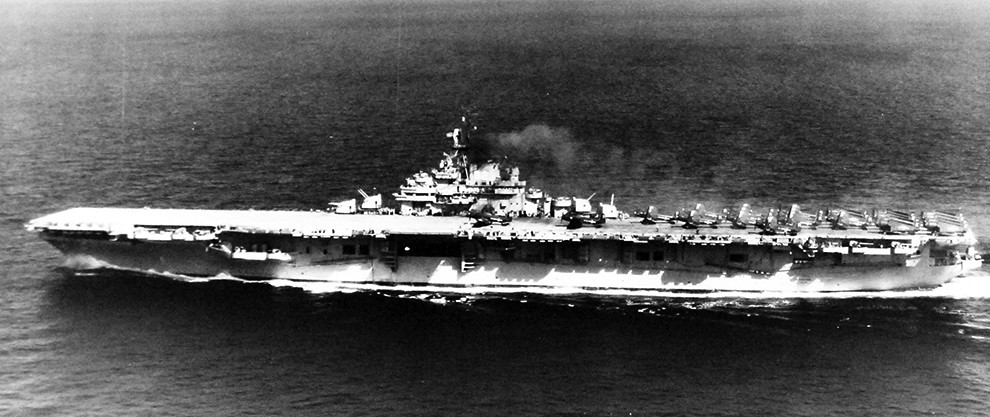
USS Leyte (CV-32, later AVT-10)
The Ticonderoga class, also known as the Essex "long hull" class, aircraft carrier, USS Leyte (CV-32), was built at Newport News, Virginia. She was originally named Crown Point but was renamed Leyte in honor of the Battle of Leyte Gulf, October 1944. Commissioned on April 11, 1946, and deployed to the Mediterranean for the next few years, she was utilized as a sign of U.S. support to the Greek, Turkish, and Lebanese governments against communism. During the Korean War, Leyte served with Commander, Seventh Fleet, where her aircraft struck North Korean targets. On such a mission, Ensign Jesse L. Brown, the first African-American to complete the Navy's basic flight-training program for pilot qualification and to be designated as a naval aviator, was shot down beyond Chosin. Lieutenant Junior Grade Thomas J. Hudner made a valiant attempt to save Brown's life and received the Medal of Honor for his actions. Following this deployment, Leyte returned to the Mediterranean and was reclassified in October 1952 as an attack-aircraft carrier CVA-32, then was reclassified in August 1953 as an anti-submarine warfare support aircraft carrier, CVS-32. During this conversion, she suffered an explosion on October 16, which killed 37 men and injured many others. Returning to sea in January 1954, she served in the Atlantic and the Caribbean for the next five years. Decommissioned in May 1959, Leyte was reclassified as an aircraft transport, AVT-10, and remained in the reserves until sold for scrapping in September 1970.
A model of the Ticonderoga class aircraft carrier used to be at the In Harm's Way (Pacific Section) at the National Museum of the U.S. Navy, Bldg. 76, until 2022.
Image: 80-G-405996: USS Leyte (CV-32), underway, January 1949. U.S. Navy photograph, now in the collections of the National Archives.



